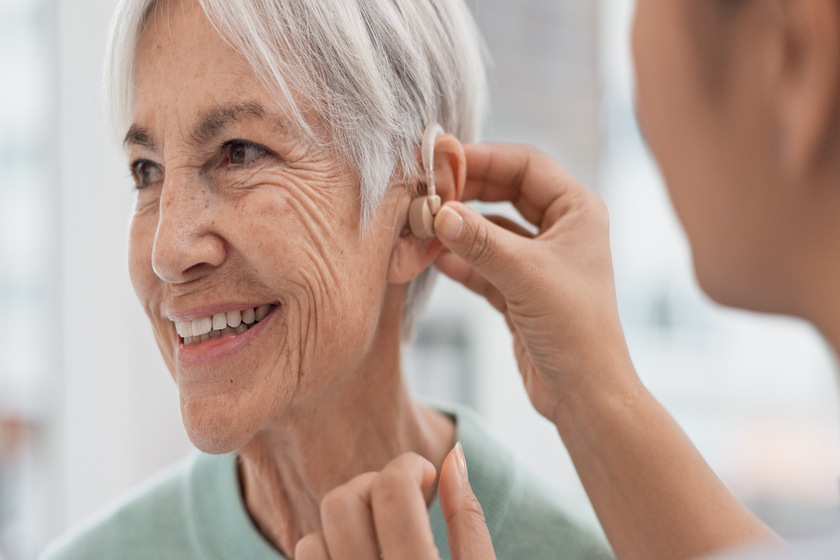Retirement communities in Kannapolis, NC, seek to offer their residents comfort, convenience, and safety. One way they achieve this is through adaptive equipment. Retirement communities use tools to help older people with daily tasks that can become difficult as they age. They use adaptive equipment to help your loved ones with everyday tasks, increasing their independence and improving their quality of life. This empowers them to navigate their environment easily.
Coping with Mobility Challenges
As we age, mobility gets complex. However, independence and ease of movement can be maintained with the right tools. Every effort is worth it. Retirement communities use adaptive equipment to ensure residents have a comfortable, independent, and fulfilling life. After all, aging is a beautiful phase of life and should be embraced with dignity and comfort. Remember, the golden years can truly be golden with the right support and equipment.
Adults in their golden years can use many different types of adaptive equipment. The devices need to meet their specific needs and preferences. Some might need unique devices due to specific health conditions. Diabetic patients may need specially designed footwear. People with arthritis might require kitchen aids designed for ease of use despite stiff and painful joints.
- Walkers and Wheelchairs: Walkers are essential for those with balance issues. Aging family members in retirement communities who struggle with mobility can confidently use walkers to move around from one place to another. On the other hand, wheelchairs offer a high level of comfort and mobility for people who struggle to walk.
- Grab Bars: Grab bars strategically placed around the community or in individual apartments provide the necessary support for residents who need a helping hand to stand or sit. In bathrooms, they can be a great aid in avoiding falls.
- Ramps: Incorporating ramps in strategic locations around retirement communities makes them more accessible for individuals with mobility aids.
Adaptive Tools for Everyday Comfort
More tools can be added to retirement communities to make everyday tasks easier, improving the residents’ overall living experience.
- Reachers and Grabbers: A reacher or grabber is helpful for people who need to pick up things without bending or reaching. It can be used to get items from the floor or high shelves or when things are out of reach. This tool is a game-changer for aging loved ones with mobility or balance issues.
- Adaptive Silverware: As people age, their grip and wrist movements may become unsteady. Adaptive silverware is designed to address these challenges. Silverware for aging loved ones is specially designed with ease of use in mind. The utensils are ergonomically designed and often have non-slip handles, making eating much easier.
- Button Hook Dressing Aids: Dressing aids like a button hook can be incredibly beneficial for aging loved ones dealing with loss of fine motor skills. This tool can turn the frustrating task of buttoning a shirt into an effortless one.
Enhancing Communication
Staying in touch with loved ones is vital for happiness and mental well-being.
- Amplified Phones: Amplified phones are great tools for people with hearing loss. They help in clear communication.
- Large Print Keyboards: A big-letter keyboard helps aging loved ones with poor eyesight. It allows them to use computers and stay connected without straining their eyes.
Leveraging Technology for Better Living
In recent years, retirement communities have been revolutionized by the fusion of technology and adaptive equipment. For instance, voice-activated devices mitigate the need for intricate manipulations. Voice assistants can do various tasks like phone calls, controlling home lighting and temperatures, and setting medication reminders. This helps aging loved ones maintain their independence.
Adaptive Equipment in Community Spaces
Beyond personalized spaces, adaptive equipment can significantly enhance community areas in retirement homes. Height-adjustable tables, carefully positioned handrails, and comfortable ergonomic seating promote comfort and social interaction. Gym equipment made for seniors can help them exercise in a safe place. It promotes good health and social interaction.
Choosing the Right Adaptive Equipment
Selecting the right adaptive equipment can take time and effort. However, it needn’t be so. Here are some tips to guide your choice:
- Consider the individual’s mobility level and physical health.
- Explore reviews and feedback from other users.
- Consult with a therapist or healthcare professional for personalized advice.
- Device usability and installation requirements should be factored in.
- Choose equipment that matches the style and look of your personal space so it only stands out a little.
Most adaptive equipment is affordable, but there may be a few that are expensive. Many retirement communities, however, offer financial assistance programs for essential medical equipment. Additionally, local Governments and NGOs often have funding schemes available.
The Future of Adaptive Equipment
Technology is advancing, and we can expect more innovations in adaptive equipment to help improve the lives of aging family members. In retirement communities, designs and devices will become easier to use, adapting to changing needs. This will help aging family members feel more independent and self-reliant.







